Selected Video Installations 1996 – 2006
1996. DEMONS VOICE
Four video installations, produced in connection with a project at the J. F. Willumsen’s Museum: Dialogue with Willumsen.
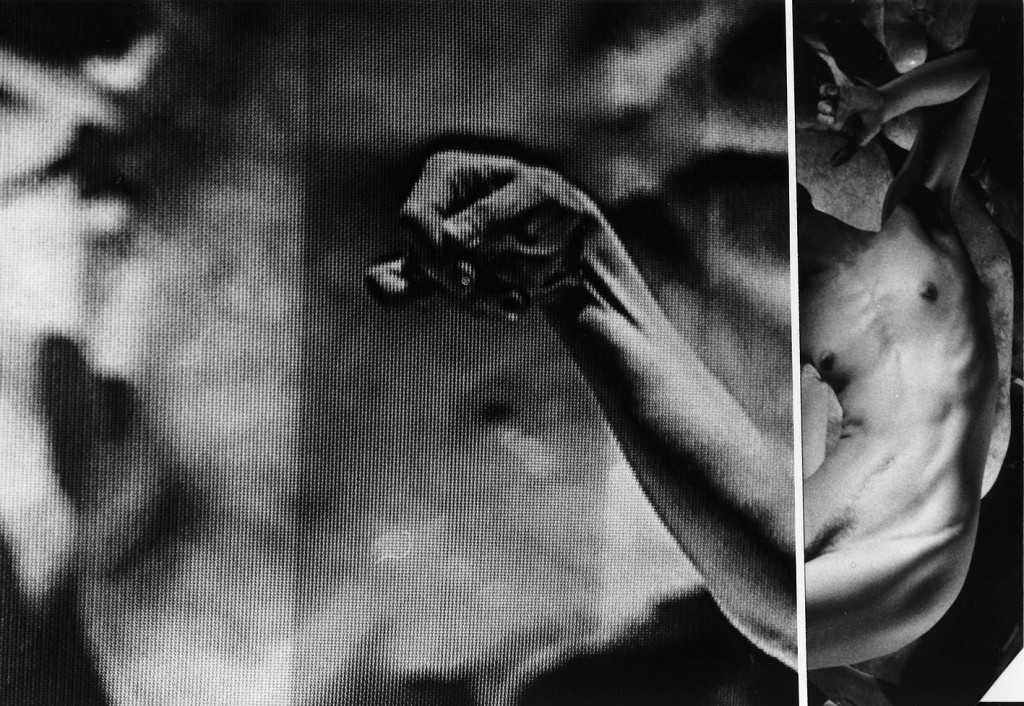
- The Dancer. 5 x 30 mins.
- The Screamer. 2 x 30 mins.
- The Collector. 3 x 30 mins.
- Venice. 4 x 30 mins.
Jens Ferdinand Willumsen (1863 – 1958) was a danish painter closely connected to the development of art in France 1890 – 1910.
1996. THE DANCER 5 x 30 mins.
During the years 1930-35 J. F. Willumsen painted a series of portraits of Madam Bourret, among these were the following five titles:
- The Valse Boston. A disintegration image in black and red colours.
- Diana. The female hunter in the woods, the searching homo naturans in an artificial lighting.
- Harlequin. The erotic, provocative, sneering, seducing, and rejecting.
- The Fire Dance. Kitsch, surperficial cultural references.
- The Seaman’s Reel. The Song of the Sirens lurking beneath the delicate colours.
These five paintings mark the starting point of the video installation The Dancer.
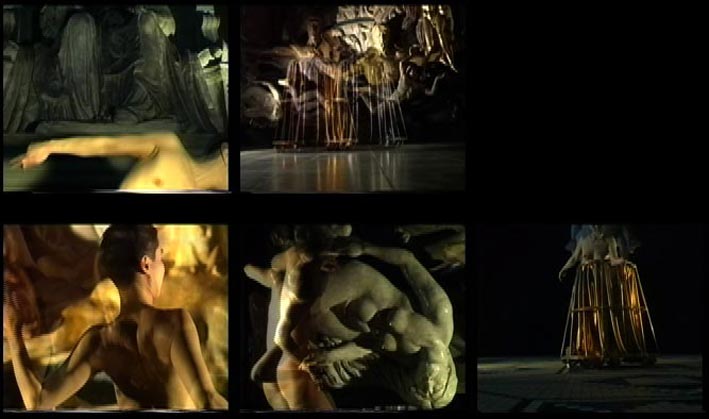
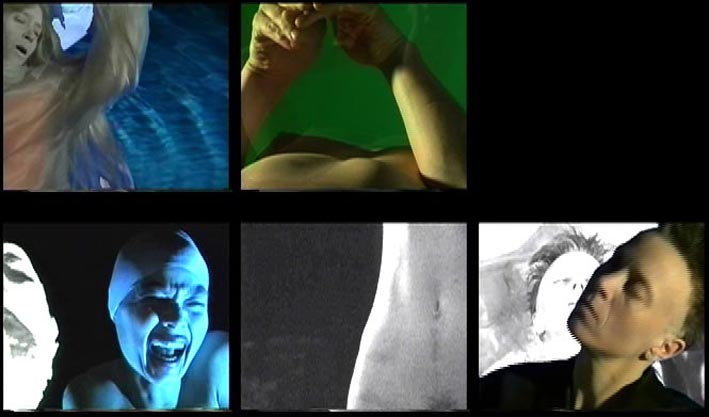
1996. THE SCREAMER 2 x 30 mins.
Throughout his life J.F. Willumsen took part in the public debate either as the object of discussion or as a commentator in various contexts.
These discussions and public debates are the very central theme of the video installation The Screamer. The central agendas documented through the video played on the two monitors comprise the rather intense debate in the newspaper Politiken that came about between the art critic Emil Hannover and Dr. Med. E.A. Tscherning during 1891; excerpts of J.F. Willumsen’s letters to Edith Willumsen between 1899-1914 and J.F. Willumsen’s extensive notes.

1996. THE COLLECTOR 3 x 30 mins.
J.F. Willumsen was a collector. Apart from his own artistic work, correspondence, notes, etc., J.F. Willumsen collected dried flowers and images from magazines and newspapers and not least he collected art which, over a long span of time, became an extensive collection of drawings, paintings and sculptures.
The spirit of the collector is the central theme of this video installation.


1996. VENICE 4 x 30 mins.
During 1930-34 J.F. Willumsen were staying in Venice on several occasions where he painted a series of cityscapes.
The paintings revolves around tourist-prospects with musicians, gondolas, lovers and children playing, to more dramatic and architectural visions of the city.
These paintings are the very starting point of the video installation Venice where the Venetian drama is acted out, over three bridges, three passages.
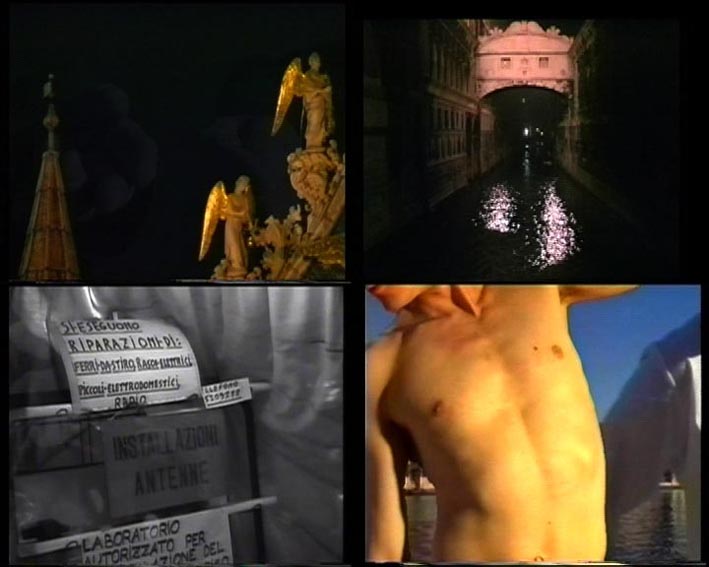
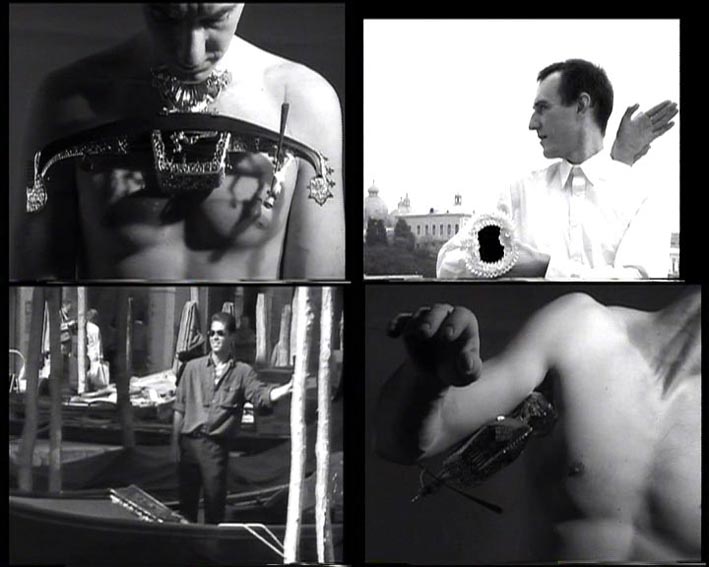
* * *
INTERMISSION #100 – #500. (1965 – 1982) 5 x 30 mins.
Video installation, designed for five large flat screens in a labyrinthine setting.
Dimensions variable.
The ground material is a series of 8 mm film-cuts and sound recordings from the period of 1965-1982.
Originally the recordings were made as parts of various film projects. These projects contained different artistic experiments that were conceived according to the following thematic: as different social, political, psychological, or simply as curious ways of looking. The basic premise was to speak against the current mainstream voice of the public sphere and against the massive flow of images.
These projects basically contained everything that the eye of the camera was able to record; from documentations of private life, of local communities, art, TV, various journeys or simply details encountered in the everyday life, as the fleeting glimpse of an eye of someone passing by on the street.
As in every project, recordings were edited, cut-outs were kept as potential for later projects, freed or alienated from their original contexts. The specific contexts dissolved and the various recordings thus became elements floating in time and space.
The cut-outs produced were left isolated, without references as to a legible context but only with hints of meaning, of connections between one image and the next. They exist in their own right but they do not expose themselves as to further scrutiny. All clear references are lost, edited out, leaving the images to offer no coherent or prior meaning.
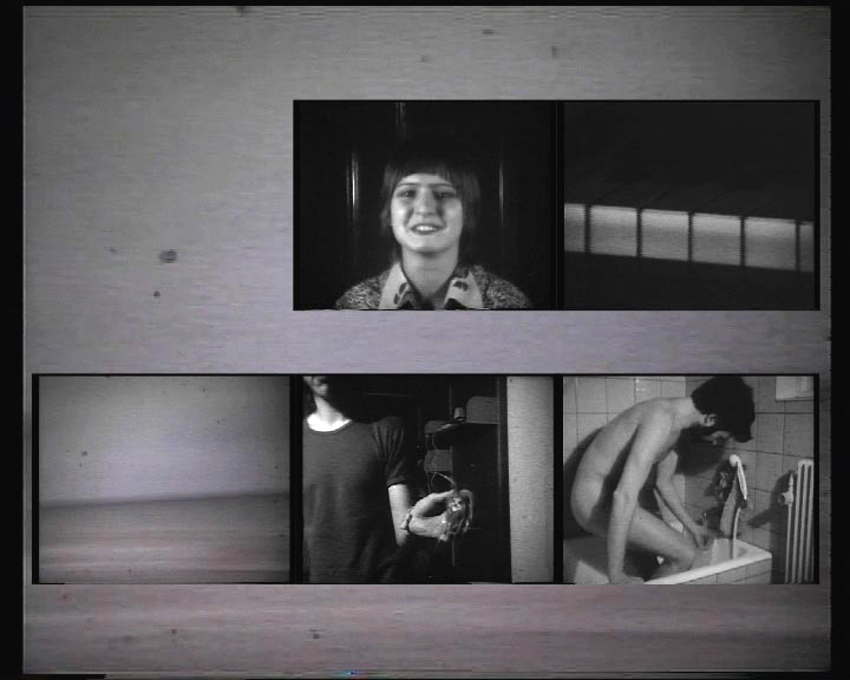
INTERMISSION #nn seeks the point from which images must form anew, as a breath prior to consciousness. The point of departure for the project is an enquiry into the almost invisible, of an emptiness where images must renew and replace themselves in new constellations.
1965-1982 in time and space. INTERMISSION #nn.
The project forms as a series of images and texts that are produced and via detours encounter themselves anew under this framing.
Images, sounds and texts are caught floating within the span of time and space during seventeen years. Faces and situations without relations to the viewer, or specific time-space relations are mixed into new constellations, thus without accounting for or documenting anything attached to specific events. As an abstract wallpaper of an era?
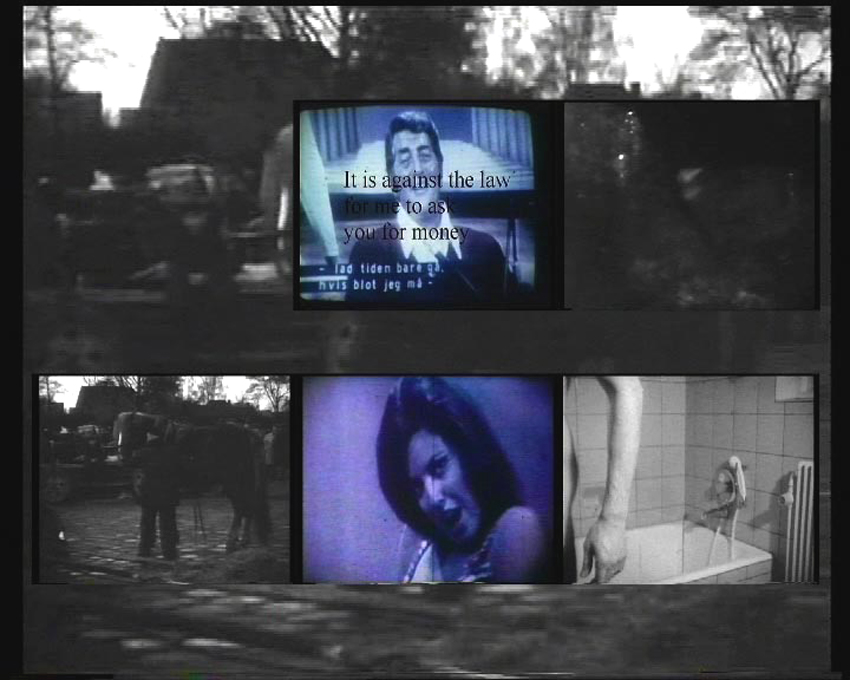
INTERMISSION #nn presents time as sketched loosely and mixed between long and short sequences without any clear cut chronology. The numeral framing of this space is: 1962-1985. As fictive borders unable to fully frame the images. It becomes harder and harder to separate between public and private imagery, as a web of meanings woven by time.
The public image is figured as the image to be conceived in the private space by a fictive non-definable viewer. The intermittent space between public and private is a grey zone. The images, sounds and texts shift between different spaces casting uncontrollable rays upon framed paths.
Does the strictly private image exist, or is it rather an abstraction legible only to the individual?
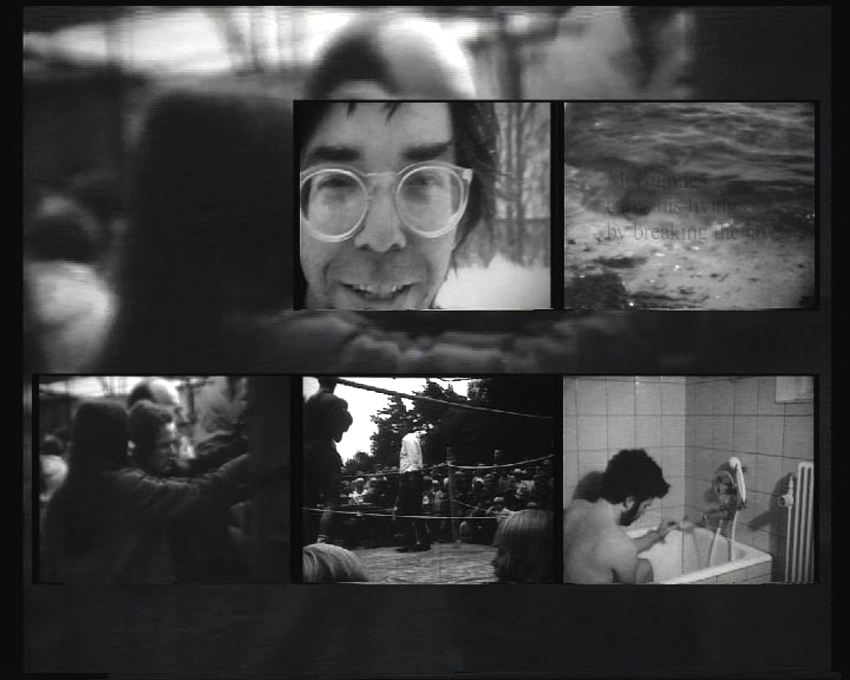
Certain part of the image belongs to time, others to space, and others again to memory. Nothing belongs to the whole. Nothing remains unattached.
The photographer makes certain interventions. He constructs and plays with the image. The recordings need subordinate themselves to the given circumstances. Hand-held recordings of Dean Martin and Muhammad Ali on TV refer more closely to the shadowy blueness of the media rather than any given characters represented. The images are caught within these settings, in arbitrary pans through time. The images are transformed from the flow of the media into surfaces and icons. The photographer’s hidden agenda seem undecipherable. The images reluctant to reveal themselves turn towards the viewer who is caught in the midst of the maelstroem of the Gaze.
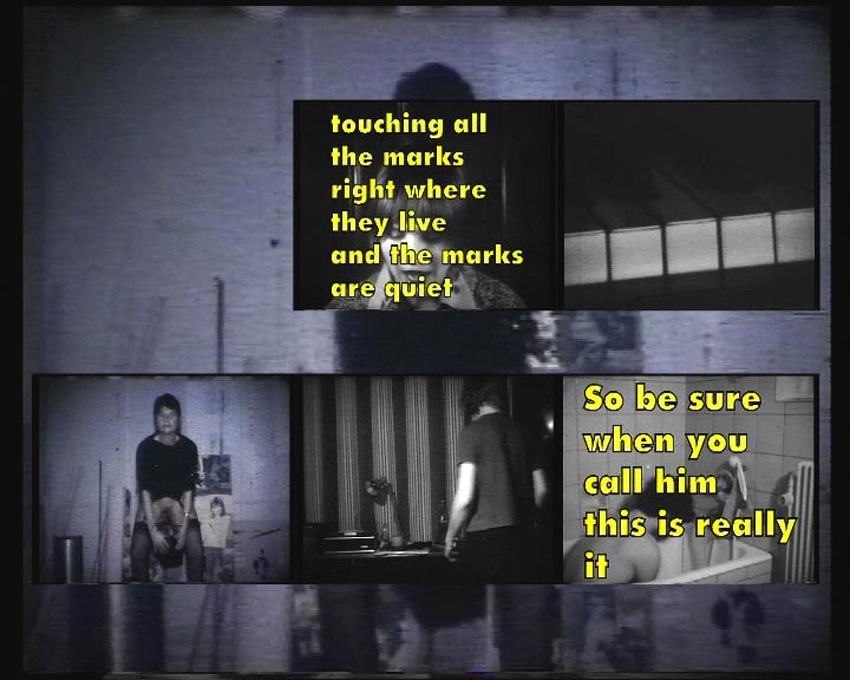
* * *
2003. THE CITY U.T. 8 x 28 mins.
Penetration. Berlin has always been targeted, a symbol of forces and power. It has been penetrated by masters, friends and enemies. The text is the penetration of thought through a random substance.
Random citations from Berlin: Alexander Platz, arm wrestling; Protest; Fans; Asphalt; Carnival; Neptune Fountain; Tree; Wall.
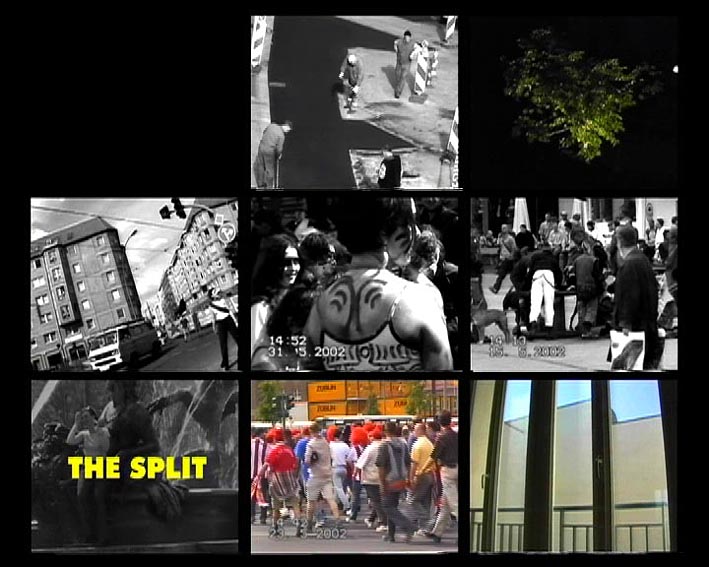
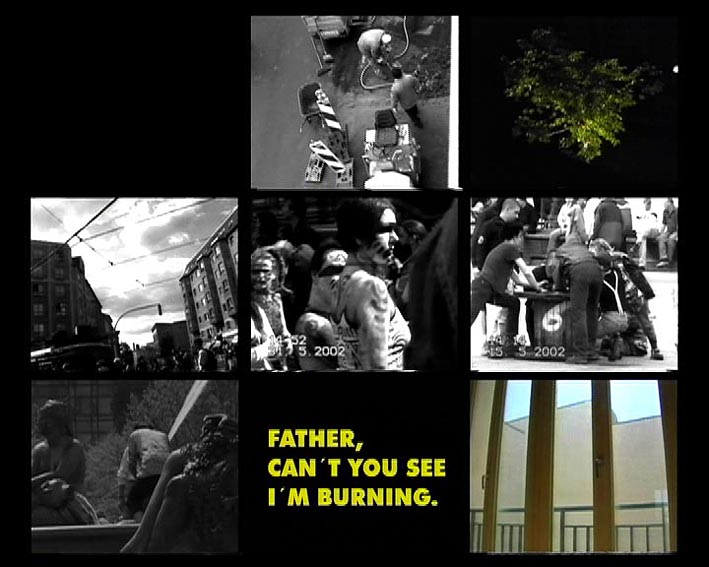
* * *
2006. IT WAS IN THE WHITE SUMMER ALL WHITE: SUNSHINE
It was in the White Summer is a video essay that takes it’s point of departure in the Danish painter J.F. Willumsen’s notes books (1890-1910). A journey through the visual arts of the 20th century as partly interpreted by the painter [J.F. Willumsen] and the present artist.
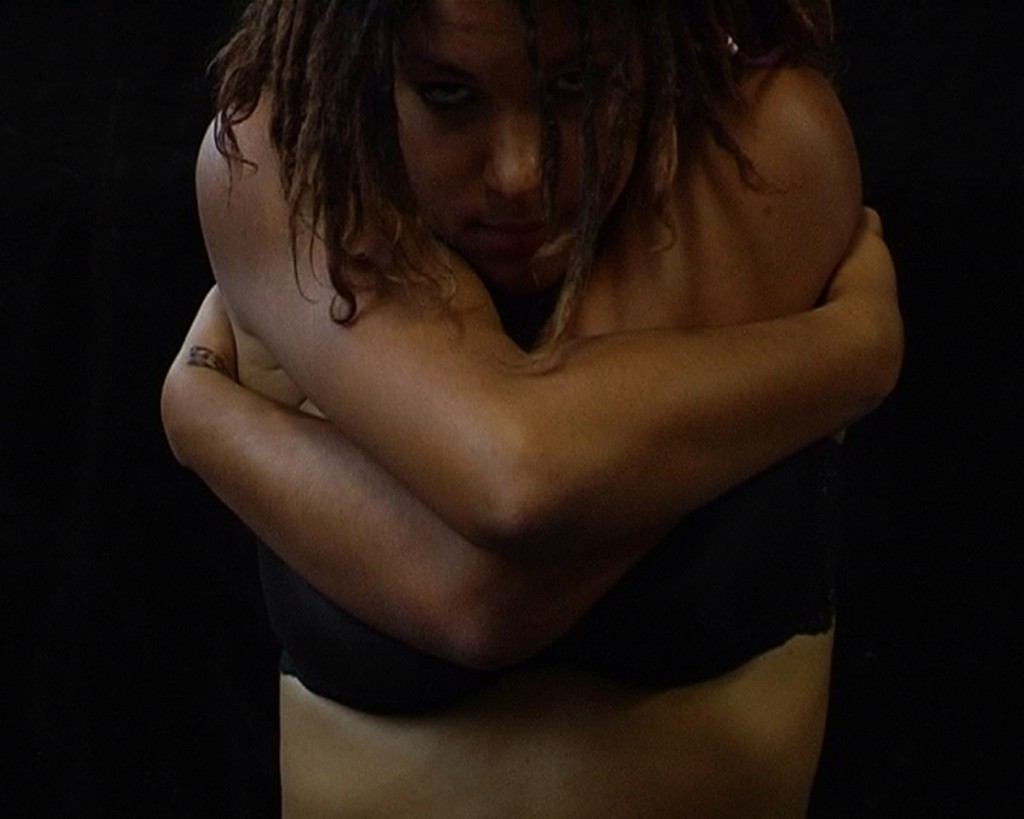
J.F. Willumsen (1863-1958) was staying in Paris on several occasions, the first longer stay being between 1888-1894.
During this period J.F. Willumsen meets four different women:
- Miss Silversparre and Sigrid of Klerker during a trip to Norway in 1892.
- Miss Brodersen in Paris in 1891.
- Paul Gauguin’s model in Paris in 1890.
- Mrs Anna Ancher in Paris in 1890.
These meetings, the artistic nerve, the tools of the artist and the creative process towards realization of the art work itself, is the very starting point for the video installation It was in the White Summer.
2006. JOTUNHEIM 3 x 94 mins.
In the summer of 1892 J.F. Willumsen travelled around Norway before he, in the mountains of Jotunheimen, discovered a motive that became the point of departure for his gesamtkunstwerk Jotunheim. The motive of the mountain was not fixed to a particular locality but rather, a condensation of the whole mountainous area, where he became fascinated by the lakes situated on different levels and by the reflections of the mountains on the surface of the water. The painting was finished in the studio in Paris where he also manufactured the frame, the mountain range fixed and the figurative side-relief.
The sequence will take the movie as starting point; the narrative style, photographing, editing and dramaturgical ways. The sequence is about the painter J.F.Willumsen’s journey to Jotunheim and the task of the painting.
Through the mountain the ‘two ladies’ will be transformed into flesh and blood. Landscape and body is being merged within their bodies. Hereafter the narrative will proceed from body to body, from the seen, to the touched.




2006. DEMON’S VOICE #1 3 x 31 mins.
Already in his youth, J.F. Willumsen wrote extensively. In letters to his fiancé and his painter friend he described his thoughts, reflections and observations. In 1892 he began a notebook stating that as he did not have a single friend, he had to confide in a book. In the book he engages with written formulations in order to sketch the motive for The Large Relief and to get hold of his thoughts and mission with the work. On his numerous journeys the letter correspondence continued and meanwhile he made additional notes on artworks and localities that took his interest. When he was at the age of forty he began writing his memoirs which came to be edited several times before he in 1945 made a stop to this work.
Demon’s voice #1. The inner voice of the writing.
The relation between writing and image is the theme in this sequence. The starting point is J.F.Willumsen’s notes in connecting with the work on The large Relief, 1890-1924 and a series of dance pictures of Madame Bourret in the 1930’s.



2006. THE HAND 3 x 88 mins.
In the early 1890s, whenJ.F. Willumsen and his wife Juliette Willumsen were living in Paris they had contact with other Danish and Scandinavian artists. He himself posed for the sculptress Anne Marie Brodersen who in this city met her coming husband, the composer Carl Nielsen. Furthermore, the poet Sophus Claussen escorted Willumsen around the night-life of the city where they both made studies for their works. Later Willumsen had contact with Wilhelm Hammershøi in Paris, whom he valued very much.
The matter in question here is the broken, the compound and what is in between. The painter posed for Anne Marie Carl Nielsen (b. Brodersen) for a bust in the 1890’s, which ended in a scene where the bust was broken.



2006. GAUGUIN 3 x 83 mins.
In the summer of 1890 Willumsen had made it for Bretagne where he, in Pont-Aven, painted the local women just like other French and foreign artists did. In fact it was Gauguin who visited Willumsen to see his works and in that Willumsen’s knowledge of French was inadequate, Gauguin was drawing and entertaining for a whole evening. Later they met a couple of times in Paris and as a token of their friendship they exchanged artworks and thus Willumsen received a sculpture La Luxure which Gauguin had just finished. In exchange Gauguin received Willumsen’s painting Type of a Breton Woman which was also a very recent piece.
The theme is: The myth about the free life of the artist; self destruction and tragedy, but there was a certain style to it. The painter meets Gauguin in the 1890’s Paris. J. F. Willumsen’s notes on this meeting is the starting point here.


2006. THE CAMERA 3 x 61 mins.
In 1893 when Willumsen was at the World Exhibition in Chicago he bought a camera, which he started using immediately. Willumsen took shots of himself, his studios, his closest family and the landscapes that he visited. Several times he took shots of motives that was incorporated as a part of his working process and throughout the years he took more that one thousand photographs. He himself never exhibited his photographs.
Photography appears in the second half of the 19th century. The painter buys his first camera in 1893. New motives and new paths is being tried out. This has a decisive influence on the painter and art in general.


2006. THE KISS 3 x 4 mins.
In 1889 when J.F. Willumsen was staying in Paris for the first time he participated in the social life of the Scandinavian artists. Amongst the members of the colony were the painters Anna and Michael Ancher, P.S. Krøyer, Frits Thaulow and Akseli Gallen-Kallela and the poets Bjørnstjerne and Jonas Lie. Willumsen describes in his memoirs how Anna Ancher was taken by the wine and offered him a kiss, while her husband was watching.
Anna Ancher let herself be kissed. Paris 1890.The large Relief keeps an eye on the scenery. The desire of the gaze is being over flown.

2006. DEMON’S VOICE #2 3 x 28 mins.
The cup is filled, the journey reaches it’s end. An ‘overload’ of images. ‘The madness of vision’ turns into white.




* * *
PERFORMER
A video and performance installation in progress.
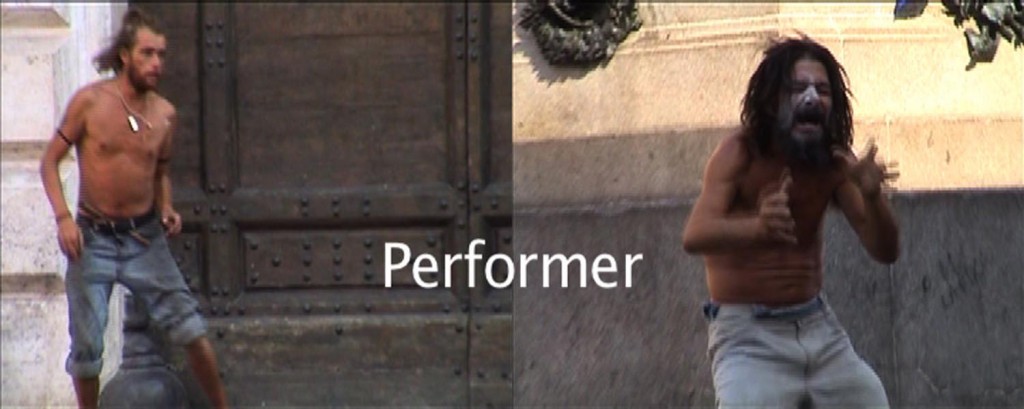
Giordano Bruno: Philosopher, poet, playwright, mnemonic and magnus.
Poet and producer of ideas.
Figurative vocabulary.
Form of number and shapes, space and words.
Geometric rhetoric.
To think infinitely.
Symmetries, proportion and measure.
Copernicus, Galileo, Kepler.
Encyclopaedias, Cabbalas, natural magic and alchemy.
Perfect language.
Of the cosmos and the divine.
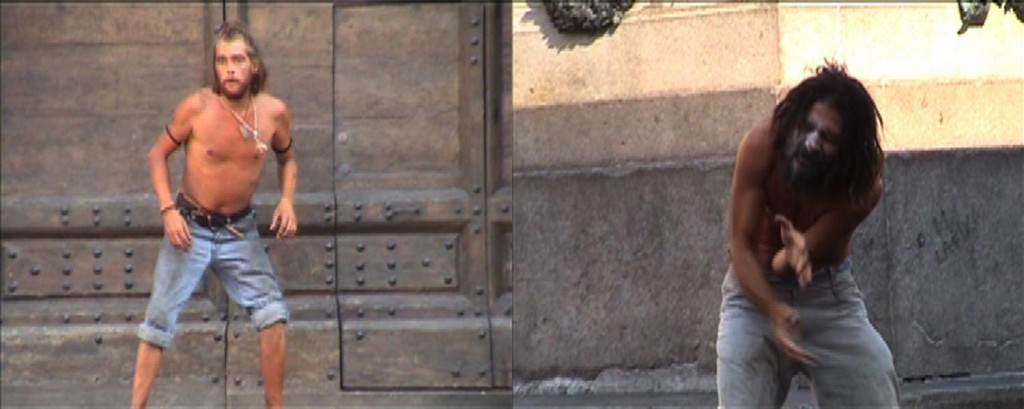
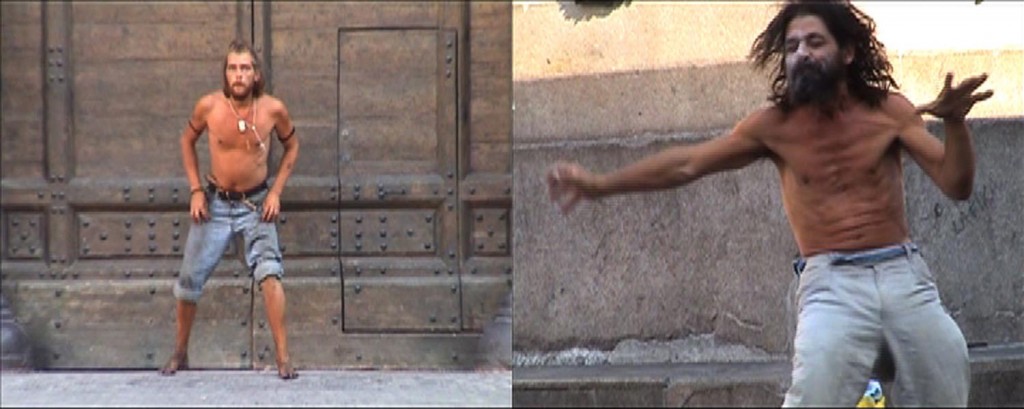
The Geometry of Language. Arielle Saiber.: “ Shapes and spaces inhabit language: Language of persuasion, beauty, inspiration and everyday. They direct our line of reasoning; they help us find our angle of approach; they curve through our discourse; they lead us to the point.
Geometry, the measure of space and of form within space, is part of language’s body, it is the skeleton of sentences, the morrow of words. By piercing through language’s skin recurring shapes of a geometric nature emerges, like the fractal branding of blood vessels of the bilateral symmetries of ribs and appendage. They are the sublime and monstrous geometries building and maintaining the literary body. “
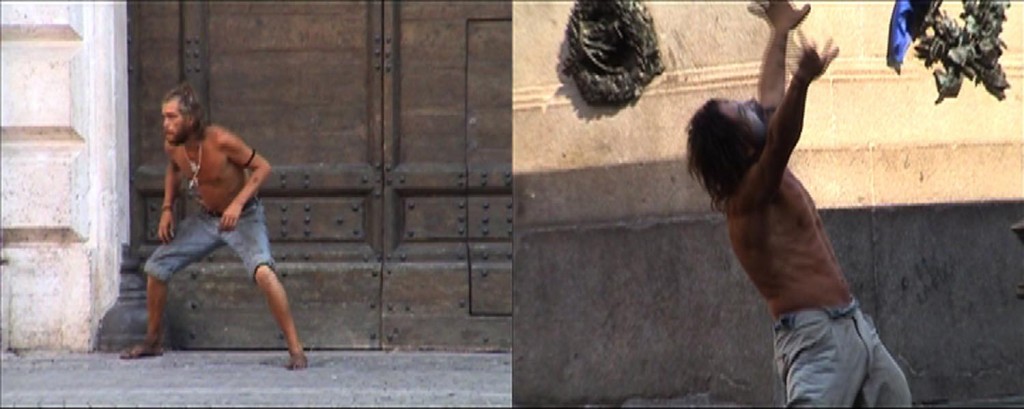
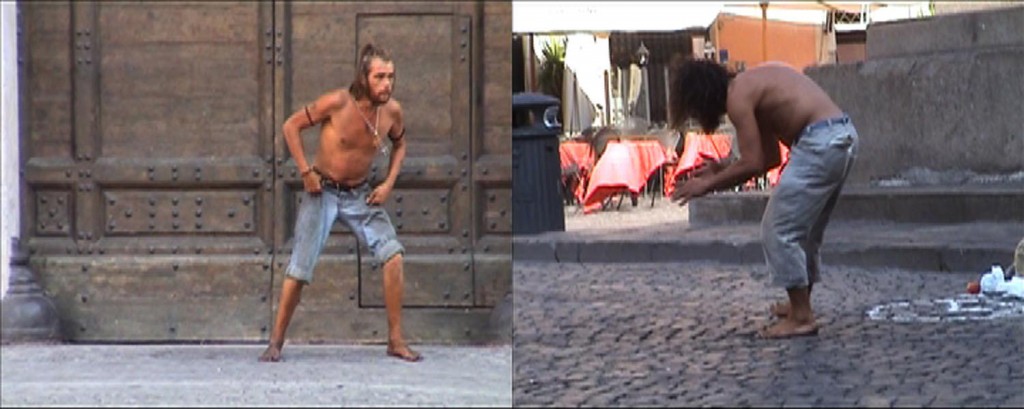
New geometric measurements and language: Randomness. Ambiguity. Generality. Fuzziness. Roughness. Factualness. Chaos. Negligibility. Indecidability.
Giordano Bruno, a circle obsessed thinker. Giordano Bruno: the Philosophy of Circles and the Circular Movement of the Blood. Walter Pagel: ”I learned from Wacker that Bruno was burned in Rome and that he suffered with fortitude-asserting the vanity of all religion and the identity of God with the world, the circle and the point: This is how Kepler in a personal letter epitomises the life and work of Giordano Bruno. It seems a particularly apt summery in that it gives pre eminence to the circle as the fundamental symbol representing the One, the eternal being that is active behind the ever-changing phenomena. For to Bruno, the circle is the first principle and the root of all other geometrical figures.”
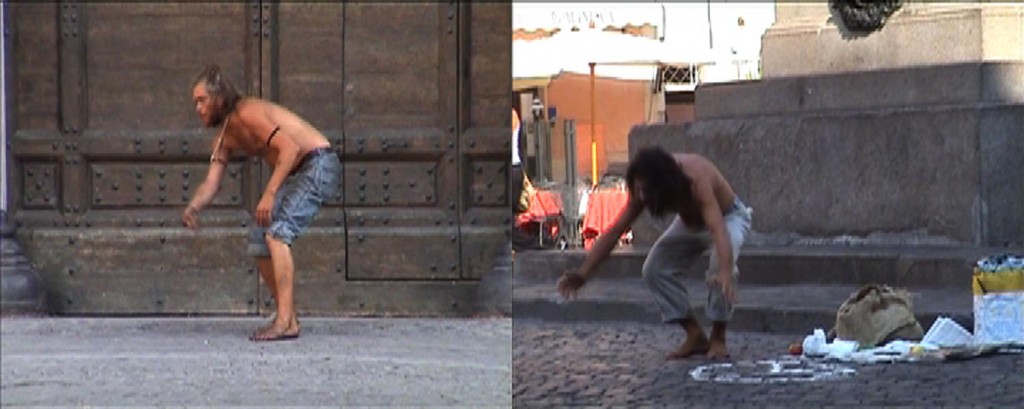
*
*
